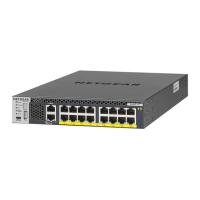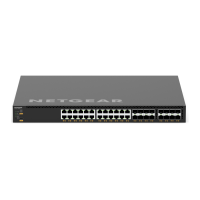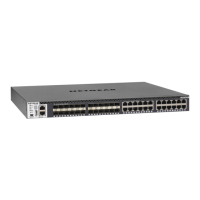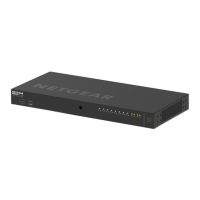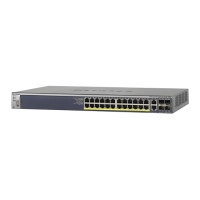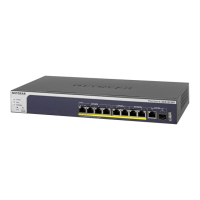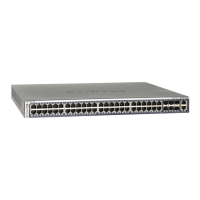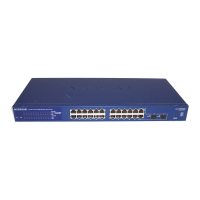Routing
325
M4300 Series and M4300-96X Fully Managed Switches User Manual
Configure Address Resolution Protocol
The Address Resolution Protocol (ARP) associates a Layer 2 MAC address with a Layer 3
IPv4 address. The switch software features both dynamic and manual ARP configuration.
With manual ARP configuration, you can statically add entries into the ARP table.
ARP is a necessary part of the Internet Protocol (IP) and is used to translate an IP address to
a media (MAC) address, defined by a local area network (LAN) such as Ethernet. A station
needing to send an IP packet must learn the MAC address of the IP destination, or of the
next hop router
, if the destination is not on the same subnet. This is achieved by broadcasting
an ARP request packet, to which the intended recipient responds by unicasting an ARP reply
containing its MAC address. Once learned, the MAC address is used in the destination
address field of the Layer 2 header prepended to the IP packet.
The ARP cache is a table maintained locally in each station on a network. ARP cache entries
are learned by examining the source information in the
ARP packet payload fields,
regardless of whether it is an
ARP request or response. Thus, when an ARP request is
broadcast to all stations on a LAN segment or virtual LAN (VLAN), each recipient has the
opportunity to store the sender’s IP and MAC address in its respective ARP cache. The ARP
response, being unicast, is normally seen only by the requestor, who stores the sender
information in its ARP cache. Newer information always replaces existing content in the ARP
cache.
The number of supported ARP entries is platform dependent.
Devices can be moved in a network, which means that the IP address that was at one time
associated with a certain MAC address is now found using a dif
ferent MAC, or it disappeared
from the network altogether (for example, it was reconfigured, disconnected, or powered of
f).
This leads to stale information in the ARP cache unless entries are updated in reaction to
new information seen on the network, periodically refreshed to determine if an address still
exists, or removed from the cache if the entry was identified as a sender of an ARP packet
during the course of an ageout interval, usually specified through configuration.
Display the ARP Entries in the ARP Cache
Use this page to display ARP entries in the ARP cache. The table lists the remote
connections most recently seen by this switch.
To display ARP entries in the ARP cache:
1. Launch a web browser.
2. In the address field of your web browser, enter the IP address of the switch.
The login window opens.
3. Enter the user name and password.
The default admin user name is
admin and the default admin password is blank, that is,
do not enter a password.
4. Click the Login button.
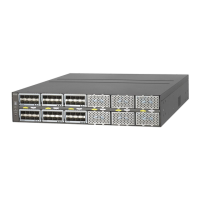
